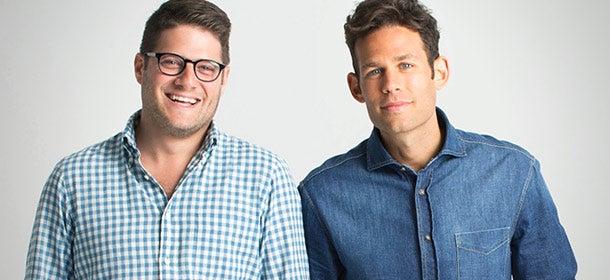
It's not capital or connections or a great idea. Those certainly help, but this matters most.
On a beautiful summer evening, treading water about 500 yards from shore as the sun sank toward the horizon, I realized I was going to drown.
It started innocently enough. I was drafted onto a cornhole team without realizing the losers had agreed to swim out to a red crab pot float and back.
Of all the people who can actually swim, I am probably the worst swimmer in the world. Throw me in the deep end and I can swim to the side. Throw me in the deep end and I can tread water for a few minutes. But that's hardly swimming.
So as I walked toward the waves I thought, "OK, how hard can this be? It's not a race. I can take my time. And it doesn't look that far away."
About 100 yards from shore, the bobbing red float looked really far away.
So I tried to trick myself. "I won't look at the float," I thought. "I'll just swim. I'll swim for a long time. I'll wait as long as I can to look at the float, and then I'll be surprised and happy about how close I've gotten!"
So I swam and resisted the temptation to look for the float. I kept swimming, kept resisting. Then I started to wonder if I had already passed the buoy. How stupid would it be to swim farther than I needed to? So I looked up.
The red float was still a really long way away.
Great.
I had a choice. I could give up, turn around, swim back to shore, and admit I couldn't do it. That was the wise, prudent, sensible choice.
But, of course, I decided to keep going.
An eternity later, I reached the float. I turned and looked back. The shore seemed impossibly far away. And just then a larger wave crested over me just as I was breathing in.
I panicked.
"There's no way I can make it back," I thought. "It's too far. I can't do it. I'm going to drown!" (You know when you get scared and freeze up and it's like you suddenly can't run or move or, in this case, swim at all? That was me.)
Thrashing and coughing, I instinctively began to raise an arm to wave to people on shore for help when an image suddenly hit me. I remembered how I felt eight miles in on the 12-mile climb up the gravel fire road of what local cyclists call the "dark side" of Reddish Knob.
I remembered how badly I hurt: heart racing, lungs burning, legs screaming, vision blurring.
I remembered how I desperately wanted to stop, and I remembered that I didn't stop.
"You're OK," I told myself. "You know you can tread water. So for now, just do that. Just chill."
And I did.
Then I thought, "I can do this. Shoot, I've done worse. It's just a matter of time and effort. Keep your heart rate reasonable, flip over on your back occasionally and just kick so you can rest your arms, and eventually you'll make it. Just go moment to moment. It's going to suck, but you can do it."
I was really tired--and grateful--by the time I finally reached the shore, but I made it. And it wasn't as bad as I had imagined. Shoot, I could have swum farther. (Because we can always, always do more.)
How? I was able to harness the power of early suffering.
Many entrepreneurs that are successful today are the product of bootstrapping and sacrificing and scraping and clawing and fighting and never, ever giving up, even in the face of seemingly insurmountable odds.
Their early struggles forge resolve. Their early struggles forge perseverance.
And their early struggles continue to inform even the most successful entrepreneurs' professional and personal lives, providing an almost inexhaustible foundation of willpower and confidence and perseverance.
All the successful entrepreneurs I know say they would not trade their early startup days of incredible struggle and effort and suffering for anything. What they learned about themselves not only carries them through the tough times but also gives them the confidence to not just think but know they can do more than they ever imagined possible--no matter what challenges they may face.
Be grateful for the struggle. Be grateful for the suffering.
Someday it will pay off--and in ways you might never expect.
From Inc. Magazine




